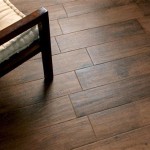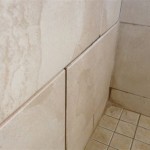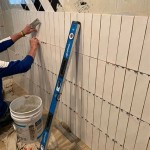Replacing Ceiling Tiles With Drywall Cost: A Comprehensive Guide
Replacing ceiling tiles with drywall is a popular home improvement project that can dramatically enhance the aesthetic and functionality of your space. Drywall provides a smooth, seamless surface that can be painted or textured to match your décor, eliminating the gridlines and discoloration common in ceiling tiles. However, it's crucial to consider the cost implications before embarking on this project.
Factors Affecting Replacement Costs
The cost of replacing ceiling tiles with drywall can vary significantly depending on several factors:
- Size of the Ceiling: Larger ceilings require more materials and labor, increasing the overall cost.
- Height of the Ceiling: Higher ceilings may require scaffolding or specialized equipment, adding to the labor cost.
- Condition of the Existing Ceiling: If the ceiling tiles are damaged or heavily discolored, additional repairs may be necessary before installing drywall.
- Location of the Property: Labor costs and material availability can vary depending on the geographic location.
Estimated Cost Breakdown
As a general estimate, the cost of replacing ceiling tiles with drywall can range from $2 to $5 per square foot. This includes the materials, labor, and any necessary repairs. Here is a more specific breakdown of the costs involved:
- Materials: Drywall panels typically cost around $10-$20 per sheet, and you will need approximately one sheet per 50 square feet of ceiling. You will also need joint compound, tape, screws, and other supplies.
- Labor: The labor cost will vary depending on the factors mentioned above. On average, expect to pay between $30-$50 per hour for a qualified drywall installer.
- Repairs: If the existing ceiling requires repairs, such as fixing leaks or removing old tiles, additional costs will be incurred.
DIY vs. Professional Installation
If you are skilled in home improvement projects and have the necessary tools, you may consider installing the drywall yourself. However, it's important to note that drywall installation requires a certain level of expertise and precision. If you are not confident in your abilities, hiring a professional drywall contractor is highly recommended.
Additional Considerations
Beyond the direct costs, there are a few other considerations when replacing ceiling tiles with drywall:
- Ceiling Height: If the ceiling height is over 8 feet, you may need to install a dropped ceiling or use higher walls to accommodate the drywall.
- Lighting: You may need to relocate or install additional lighting fixtures to ensure adequate illumination after the drywall is installed.
- Soundproofing: Drywall can provide better soundproofing than ceiling tiles, but if soundproofing is a primary concern, you may want to consider installing acoustic panels or specialized sound-absorbing treatments.
Conclusion
Replacing ceiling tiles with drywall can enhance the aesthetics and functionality of your space. The cost of the project will vary depending on several factors, including the size of the ceiling, height, condition, location, and labor costs. Whether you choose to install the drywall yourself or hire a professional, weigh the costs and considerations carefully to make an informed decision.

How Much Does Ceiling Repair Cost Forbes Home

2024 Ceiling Repair Costs Fix Drywall Water Damage Leaks Plaster

Simple Tips To Estimate The Cost Replace Ceiling Tiles In Drywall

Drywall Ceiling Cost To Install Or Replace 2024 Update

How Much Does Ceiling Installation Or Replacement Cost 2024

Drop Ceiling Or Drywall Which One Should You Choose

Drop Ceiling Vs Drywall Pros Cons And Costs

How Much Does A Drop Ceiling Cost In 2024 Homeguide

Ceiling Replacement Cost How It Works Ralph Plastering

How Much Does Ceiling Repair Water Damage Cost In 2024
Related Posts








